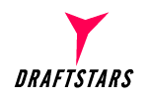Best Betting Sites Australia 2025 - Top Licensed Bookmakers
There are over 120 licensed online betting sites in Australia.
On this page, you'll find eight of the best, as chosen by our betting experts based on feedback from Gambling.com users in December 2025.
- 18+. T&C Apply
- 18+, Registration Required, T&C's Apply. https://www.gamblinghelponline.org.au/ Disclaimer: Bet365 does not offer bonus codes in Australia and this referral code does not grant access to offers. What's gambling really costing you?
- 18+. T&C Apply
- 18+. T&C Apply
- 18+. T&C Apply
- 18+. T&C Apply
- 18+. T&C Apply
- 18+. T&C Apply
What to Consider When Choosing a Betting Site
When choosing between Australian betting sites, it’s important to weigh up a few key factors.
Every punter has different priorities - but the best Australian betting apps and sites usually excel in the following areas:
- Competitive Odds: Look for sites that consistently offer strong live odds across major sports and racing markets. Better odds mean better long-term value.
- Coverage of Aussie Sports: The top betting sites prioritise Australian betting favourites like AFL, NRL, cricket, and horse racing, with lots of betting options and special promotions.
- Mobile App & User Experience: The best sites offer fast, reliable apps that make it easy to place bets, find markets, and manage your account on the go.
- Reputation & Trustworthiness: Stick with well-established, licensed bookmakers that have a strong track record and positive reviews from Australian punters.
- Customer Support & Safety: Responsive customer service, secure payment options, and access to responsible gambling tools are essential for a safe betting experience.
The Legality of Betting Sites in Australia
Sports betting is legal for over-18s but tightly regulated.
Under the Interactive Gambling Act 2001, any online betting site must hold an Australian license - unlicensed offshore sites are banned.
In-play bets are prohibited except in very limited, approved formats.
From 2025, the 'Know Your Losses' amendment requires licensed sites and apps to show your net losses in real time via a permanent banner.
Betting agencies must also comply with each state’s advertising and consumer-protection codes.
Licensed sites verify identity, keep customer funds in segregated accounts, and offer responsible gambling tools like deposit limits and self-exclusions.
We only recommend bookmakers with valid Australian licensing, so you can bet safely and legally.
A Closer Look at Australia's Top 5 Betting Sites
We've extensively tested and reviewed the best online betting agencies available to Australians and recommend the following options.
Everyone's preferences are different when it comes to choosing a site to bet with, so here's a quick overview of each one.
Click through to one of our in-depth expert reviews if you want to find out more about any of these sites.
Ladbrokes
Ladbrokes boasts strong odds across most sports and also has a really handy same-game multi tool.
The same-game multi covers nine sports in total, including AFL and NRL games, and you can combine up to 20 selections from a single game into one bet.
Horse racing bettors can stream action from major Australian tracks like Flemington, Randwick and Caulfield while they bet - another nice perk.
A few more MMA markets would come in handy however, for those who like to bet on combat sports.
We recently rewrote our Ladbrokes review to cover all the pros and cons of this site, including the latest new features. Give it a read if you want a deeper insight into what this bookie has to offer.
Unibet
Unibet offers Australian punters a premium betting experience, especially for those who value live streaming - with access to over 165,000 events annually, including NBA, NFL, tennis, soccer, and horse racing.
The site stands out for its Uniboosts, allowing users to enhance fixed odds on selected horse racing bets daily.
Sports betting options are plentiful, from Aussie favourites like AFL and NRL to niche markets like darts. It's also one of the better Esports betting sites we've used.
One downside is that the same-game multi feature is a little bit more limited than the bet builders from Ladbrokes and bet365.
That's just a snapshot - our Unibet review covers all the bases so you can decide whether it's worth signing up.
bet365
bet365 has over 80 million customers worldwide for a reason - it's very hard to find fault with this betting site.
The same-game multi can be used to bet on 14 different sports, more than any other Australian bookie offers.
Over 600,000 events are streamed live annually for bet365 customers, including Australian horse races, as well as sports like tennis, cricket, and soccer.
If we're nit-picking, there's an argument to say that the site might be a bit too confusing for newcomers to online betting. That's mainly because it's so feature-packed.
We recently conducted extensive testing of this site and refreshed our expert bet365 review, which covers all the pros and cons in detail.
Betr
Betr is a 100% Australian-owned bookmaker that has gained traction since its 2022 launch, especially among racing enthusiasts.
The site has odds for Australian thoroughbred, greyhound, and harness racing, complemented by features like Best Tote + SP and exotic bet types such as trifectas and first fours.
Sports bettors can also wager on AFL, NRL, NBA, EPL, and UFC, with competitive odds backed up by odds boosts during major events.
The mobile app is user-friendly, supporting features like multi-bet tracking and Apple Pay deposits. However, Betr currently lacks live streaming capabilities.
Our Betr review should be your first port of call if you need further insight.
Betfair
Betfair Australia stands out as the nation's sole licensed betting exchange, offering a unique platform where punters bet against each other rather than a traditional bookmaker.
This peer-to-peer model often results in better odds and the site allows users to both back and lay bets, so you can act as the bookie or the bettor.
However, newcomers might find the exchange model initially complex, and the absence of live streaming could be a drawback for some.
For a deeper look at how the exchange works and whether it's right for you, check out our full Betfair review.
How we Test & Review Betting Sites
At Gambling.com, we follow a strict methodology on how we review sports betting sites.
Here’s what we focus on:
Legality & Safety – Only fully licensed, government-regulated bookmakers are reviewed.
Real Testing – We deposit real money, place real bets, and verify the betting experience ourselves.
Market Depth & Odds – We assess sports covered, odds competitiveness, and standout features.
Mobile & User Experience – Usability across devices, app performance, and payment speeds are key.
Scoring System – Sites are rated across 10 core factors and given an overall score out of 10.
Responsible Gambling
It is believed over half of all adults in Australia participate in gambling every year and while the large majority of bettors do so responsibly, it can sometimes get out of control.
As such, great care should be taken when using a betting site as they can be addictive.
Our advice is to make use of the responsible gambling tools provided by the top bookies, such as deposit limits, loss limits and session limits.
All licensed bookmakers should offer help and support for any customers struggling to stay in control of their gambling.
However, should you wish to seek independent help for gambling-related harm, there are several organisations you can turn to for support, advice and information, as outlined below.
Gambling Help Online provide 24/7 support through online chat and email for people experiencing gambling problems, with confidential advice and counselling on offer.
Final Thoughts on The Best Betting Sites in Australia
Australia is home to a robust and regulated online betting landscape, featuring bookmakers that deliver secure platforms with lots of extra perks that you can't get offline.
Whether you're backing your favourite AFL or NRL team, following the Ashes, or betting on global soccer leagues, the sites we've recommended offer a premium betting experience.
Expect intuitive interfaces, responsive customer support, live streaming, and value odds.
Safety is a priority - these licensed sites keep funds secure in segregated accounts and provide comprehensive tools to promote responsible betting.
Features like deposit limits, reality checks, time-out options, and self-exclusion are always worth considering.
We continuously put sites to the test and update our reviews and rankings accordingly, so check back at any time to see our up-to-date recommendations.
FAQ
Is sports betting legal in Australia?
The legality of online gambling in Australia varies depending on the type of activity. For example, games of chance including baccarat, blackjack, bingo, pokies, and poker aren’t permitted online. However, sports betting is legal and regulated under the Interactive Gambling Act 2001, with many local sites licensed in the Northern Territory.
What is the minimum age to bet online in Australia?
You must be at least 18 years old to register and place bets with any Australian betting site. During account signup, bookmakers will verify your identity and age using official documents (e.g., driver’s license or passport) to ensure compliance with gambling laws.
How do I deposit and withdraw money from an Australian betting site?
Most Australian bookmakers accept lots of secure payment methods including debit and credit cards, PayID/OSKO instant bank transfers, BPAY, bank transfers, and e-wallets like POLi and Skrill. To deposit, log into your account, visit the “Cashier” section, select your preferred method and follow the prompts. Withdrawals take one to three days once your identity is verified.
How can I tell if an online bookmaker is safe and reliable?
At Gambling.com, we only recommend sites that have full valid licensing. If looking elsewhere, check for SSL encryption to ensure your data is protected. Legitimate sites will offer responsible-gambling tools like deposit limits, time-outs, and self-exclusion options. They should also have transparent terms and conditions that clearly outline wagering rules, bonus requirements, and withdrawal policies.
What can you bet on in Australia?
While online casino games and pokies are illegal in Australia, you can bet on sports with any of the licensed bookmakers you find ranked at Gambling.com. Horse racing, AFL, NRL, soccer, cricket, basketball and tennis are the most popular betting markets - according to 2022 research from the Australian Institute of Family Studies.






















